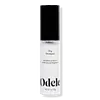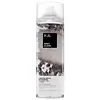What's inside
What's inside
 Key Ingredients
Key Ingredients

 Benefits
Benefits

 Concerns
Concerns

 Ingredients Side-by-side
Ingredients Side-by-side

Zea Mays Starch
AbsorbentMaranta Arundinacea Root Powder
Skin ConditioningOryza Sativa Starch
AbsorbentKaolin
AbrasiveHydrated Silica
AbrasiveSodium Bicarbonate
AbrasiveLaminaria Digitata Extract
Skin ProtectingChlorella Vulgaris Extract
Skin ConditioningLavandula Stoechas Extract
MaskingSaccharide Isomerate
HumectantSea Water
HumectantGlycerin
HumectantCetrimonium Chloride
AntimicrobialWater
Skin ConditioningParfum
MaskingButane
Propane
Sd Alcohol 40-B
AstringentAluminum Starch Octenylsuccinate
AbsorbentOryza Sativa Starch
AbsorbentZeolite
AbsorbentAcrylates Copolymer
Hydrated Silica
AbrasiveCharcoal Powder
AbrasiveSodium Bicarbonate
AbrasiveMagnesium Carbonate
AbsorbentDiisopropyl Adipate
EmollientCellulose
AbsorbentHydroxyethylcellulose
Emulsion StabilisingCamellia Sinensis Leaf Extract
AntimicrobialDisteardimonium Hectorite
StabilisingButylene Glycol
HumectantPolyquaternium-59
UV AbsorberCetrimonium Chloride
AntimicrobialSodium Acetate
BufferingWater
Skin ConditioningPhenoxyethanol
PreservativeParfum
MaskingButane, Propane, Sd Alcohol 40-B, Aluminum Starch Octenylsuccinate, Oryza Sativa Starch, Zeolite, Acrylates Copolymer, Hydrated Silica, Charcoal Powder, Sodium Bicarbonate, Magnesium Carbonate, Diisopropyl Adipate, Cellulose, Hydroxyethylcellulose, Camellia Sinensis Leaf Extract, Disteardimonium Hectorite, Butylene Glycol, Polyquaternium-59, Cetrimonium Chloride, Sodium Acetate, Water, Phenoxyethanol, Parfum
 Reviews
Reviews

Ingredients Explained
These ingredients are found in both products.
Ingredients higher up in an ingredient list are typically present in a larger amount.
This ingredient is a preservative, antimicrobial, and emulsifier. It is often used in cosmetics for its ability to cleanse, condition, and reduce static.
Cetrimonium chloride is a quaternary ammonium salt, meaning it has a water-soluble structure.
Hydrated Silica is a type of silicon dioxide. It is called 'hydrated silica' because it is silica with extra bonded water atoms.
It is an absorbent and abrasive, meaning it is exfoliating.
Silica is often used for absorption and can help reduce shine when products are applied.
Learn more about Hydrated SilicaOryza Sativa Starch is an absorbent and used to mattify the skin. It is a natural carbohydrate and the main component of rice. A more common name for this ingredient is 'rice starch'.
Rice starch is created by steeping broken grains in a caustic soda.
Rice extract has many skin benefits. Read more about rice extract here.
Learn more about Oryza Sativa StarchParfum is a catch-all term for an ingredient or more that is used to give a scent to products.
Also called "fragrance", this ingredient can be a blend of hundreds of chemicals or plant oils. This means every product with "fragrance" or "parfum" in the ingredients list is a different mixture.
For instance, Habanolide is a proprietary trade name for a specific aroma chemical. When used as a fragrance ingredient in cosmetics, most aroma chemicals fall under the broad labeling category of “FRAGRANCE” or “PARFUM” according to EU and US regulations.
The term 'parfum' or 'fragrance' is not regulated in many countries. In many cases, it is up to the brand to define this term.
For instance, many brands choose to label themselves as "fragrance-free" because they are not using synthetic fragrances. However, their products may still contain ingredients such as essential oils that are considered a fragrance by INCI standards.
One example is Calendula flower extract. Calendula is an essential oil that still imparts a scent or 'fragrance'.
Depending on the blend, the ingredients in the mixture can cause allergies and sensitivities on the skin. Some ingredients that are known EU allergens include linalool and citronellol.
Parfum can also be used to mask or cover an unpleasant scent.
The bottom line is: not all fragrances/parfum/ingredients are created equally. If you are worried about fragrances, we recommend taking a closer look at an ingredient. And of course, we always recommend speaking with a professional.
Learn more about ParfumSodium Bicarbonate has a more famous name: Baking soda.
In cosmetics, it is used to adjust the acidity. Due to its white crystalline solid form, it can also be an abrasive (exfoliator).
This ingredient is water-soluble.
Learn more about Sodium BicarbonateWater. It's the most common cosmetic ingredient of all. You'll usually see it at the top of ingredient lists, meaning that it makes up the largest part of the product.
So why is it so popular? Water most often acts as a solvent - this means that it helps dissolve other ingredients into the formulation.
You'll also recognize water as that liquid we all need to stay alive. If you see this, drink a glass of water. Stay hydrated!
Learn more about Water